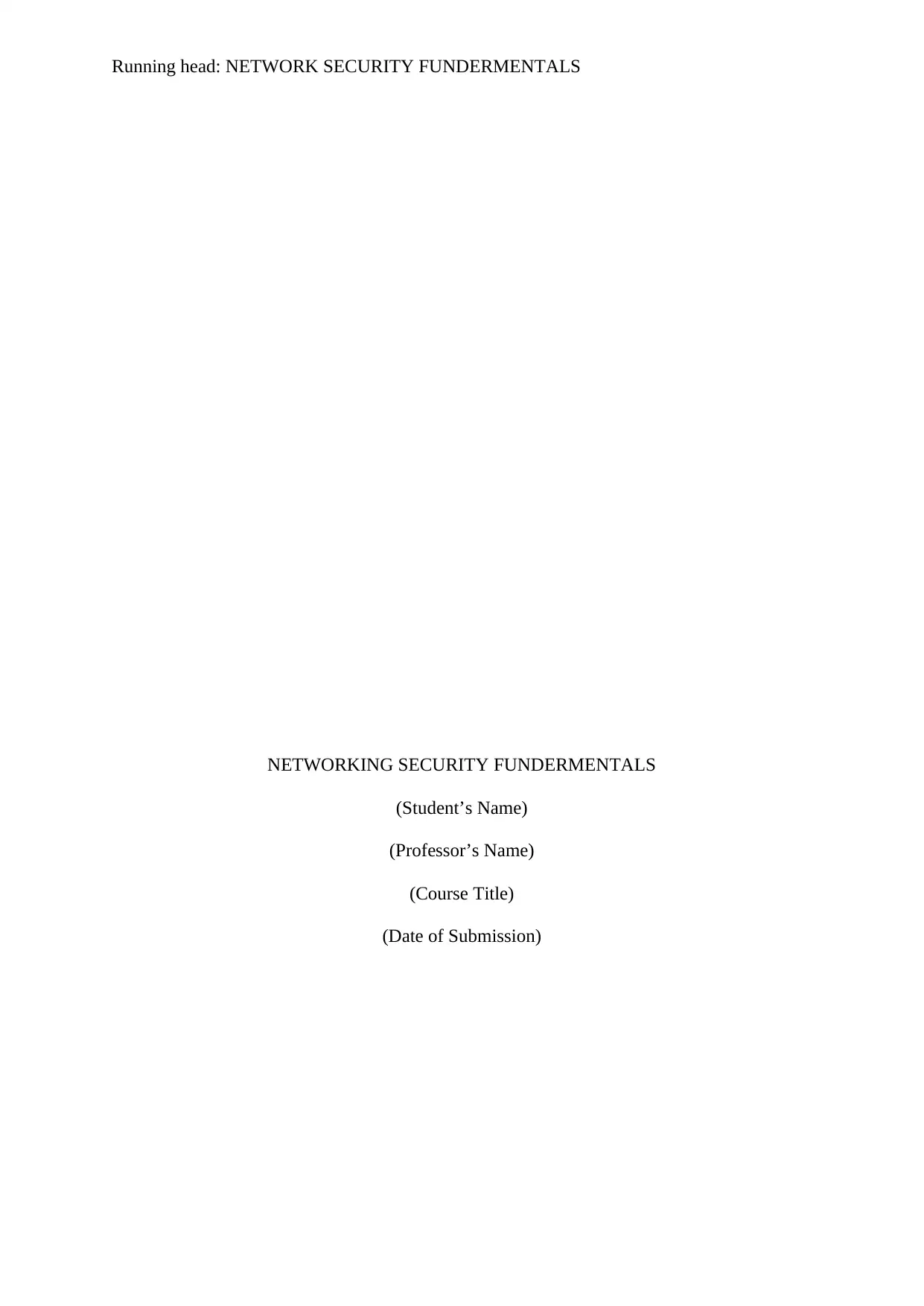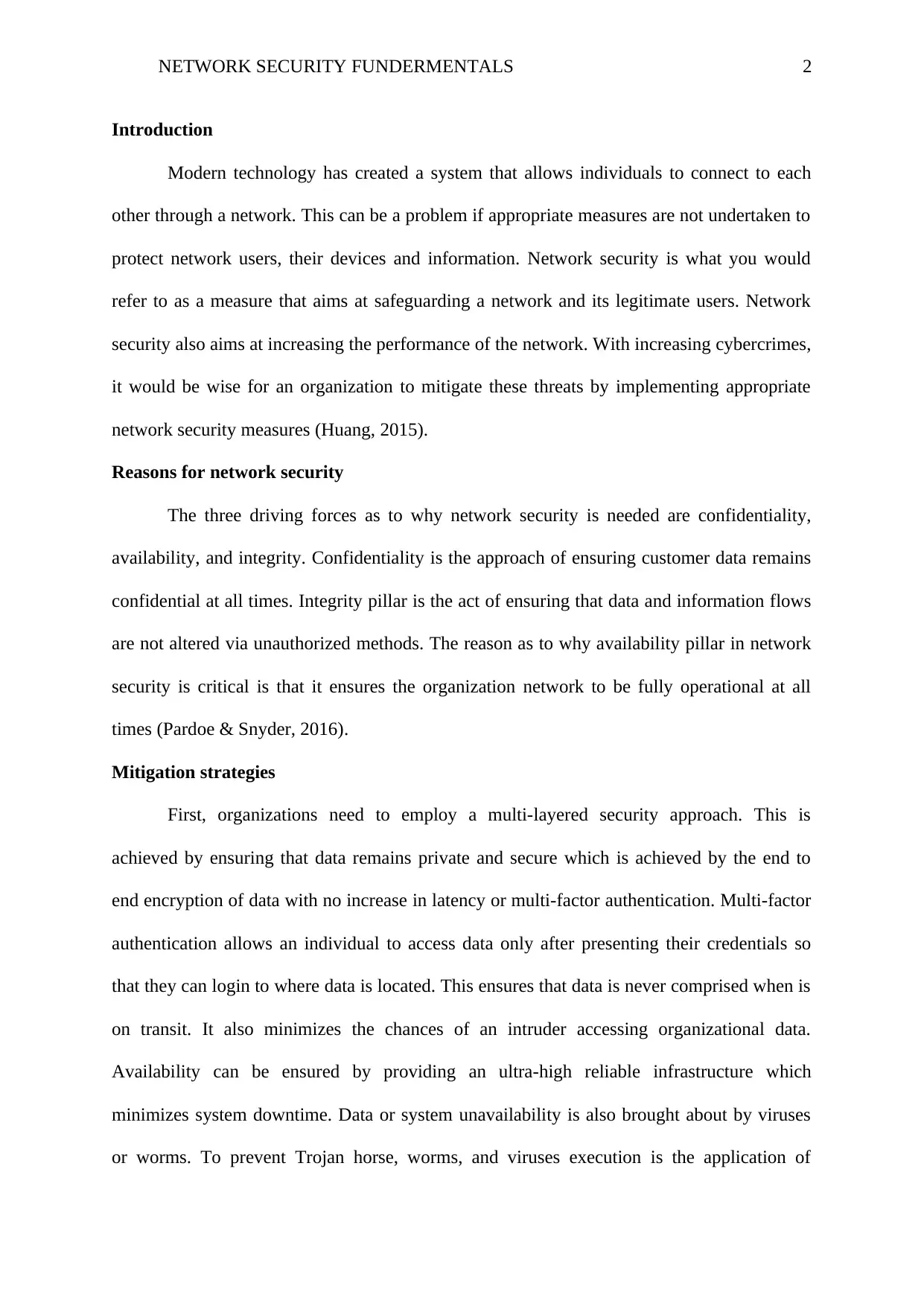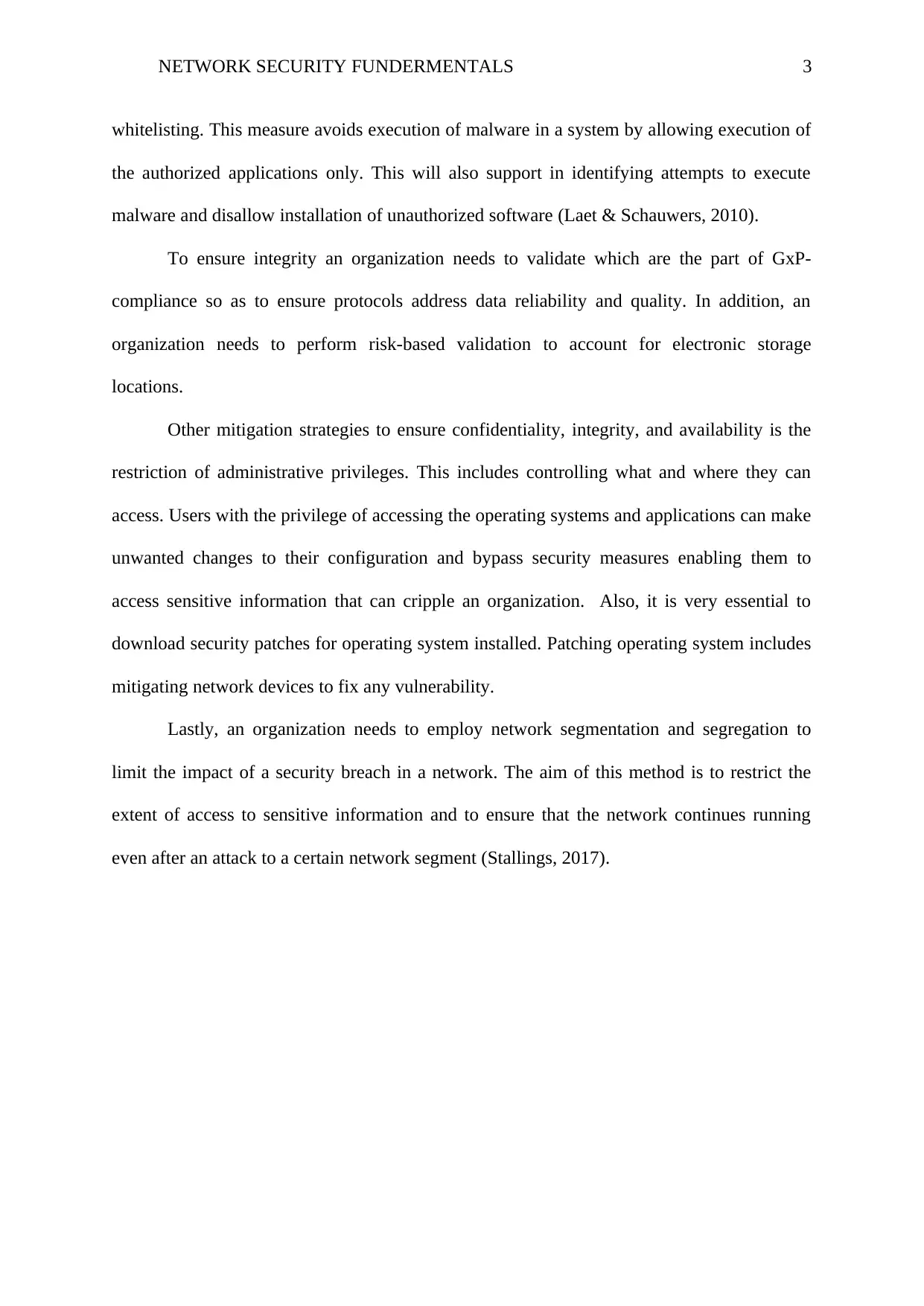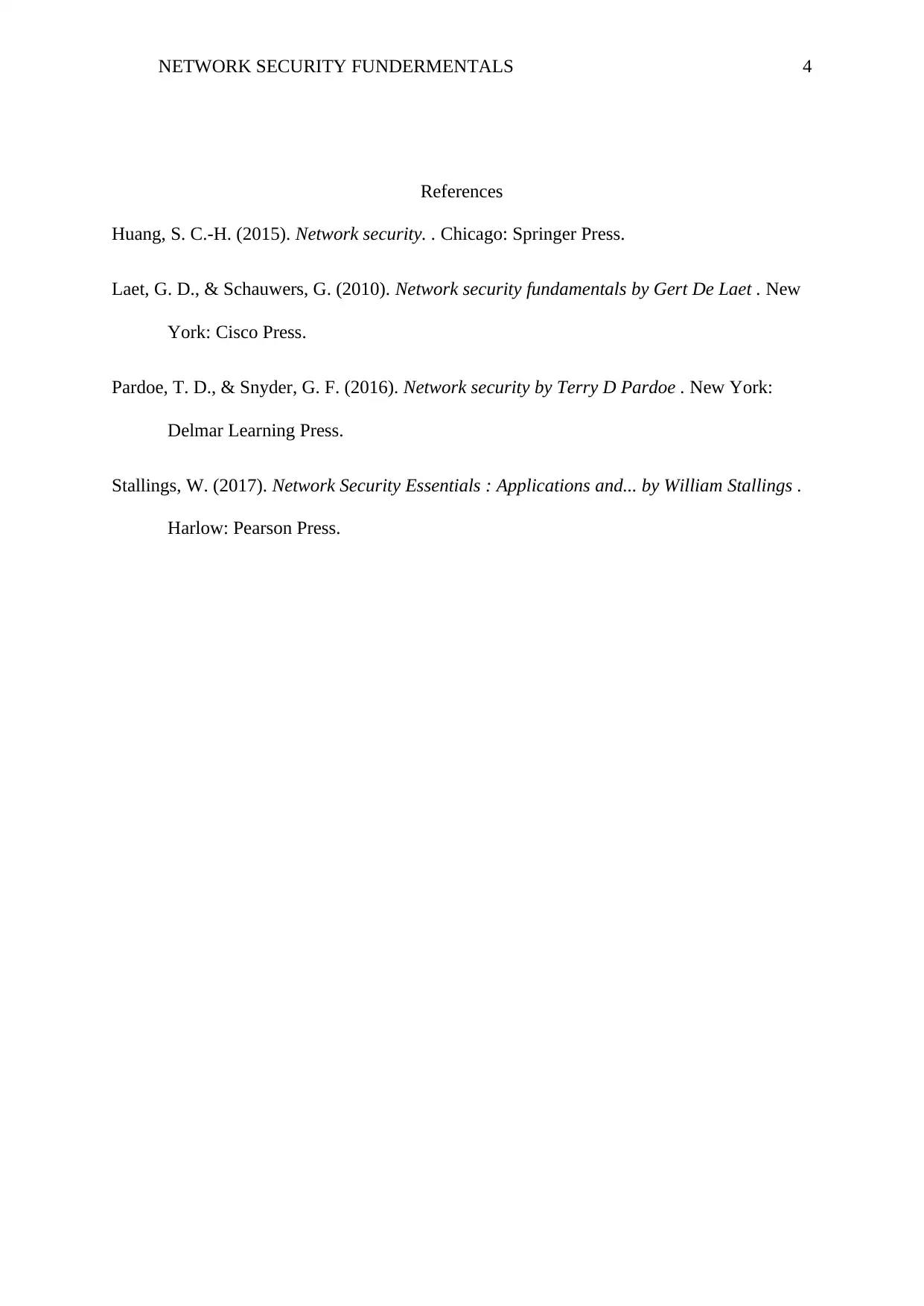Network Security Fundamentals Report - Cyber Security Essentials
VerifiedAdded on 2023/04/21
|4
|699
|200
Report
AI Summary
This report delves into the core principles of network security, emphasizing the importance of safeguarding networks, devices, and information in the modern technological landscape. It highlights the critical need for network security due to increasing cybercrimes and outlines the three driving forces behind it: confidentiality, integrity, and availability. The report details various mitigation strategies, including multi-layered security approaches like end-to-end data encryption and multi-factor authentication to ensure data privacy and prevent unauthorized access. It also discusses the importance of a reliable infrastructure to ensure availability, the use of whitelisting to prevent malware execution, and the validation of GxP compliance to maintain data integrity. Further strategies include restricting administrative privileges, downloading security patches, and employing network segmentation to limit the impact of security breaches. The report provides valuable insights into establishing robust network security measures to protect against various threats and ensure the smooth operation of an organization's network.
1 out of 4











![[object Object]](/_next/static/media/star-bottom.7253800d.svg)